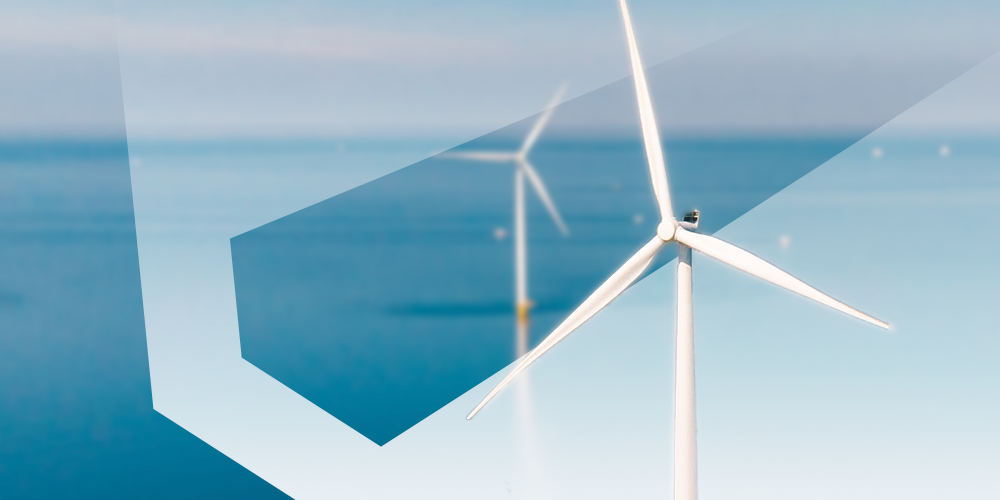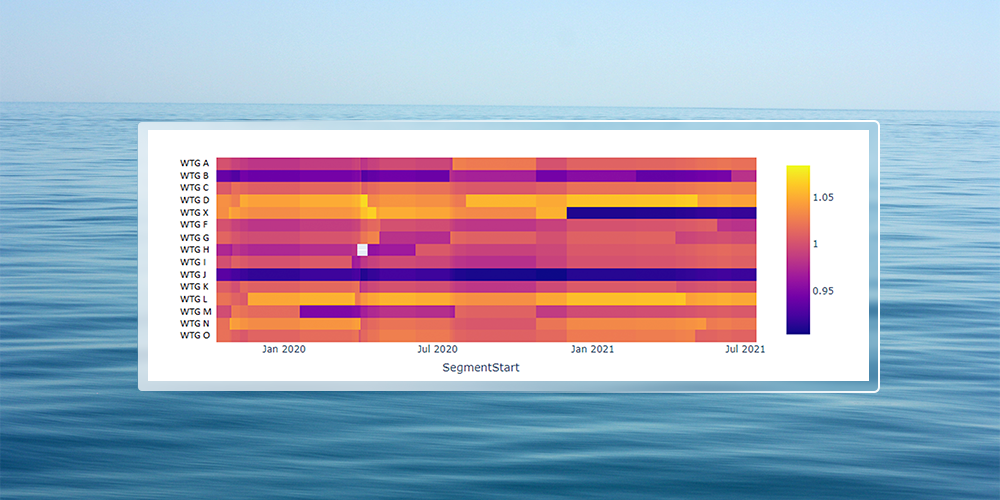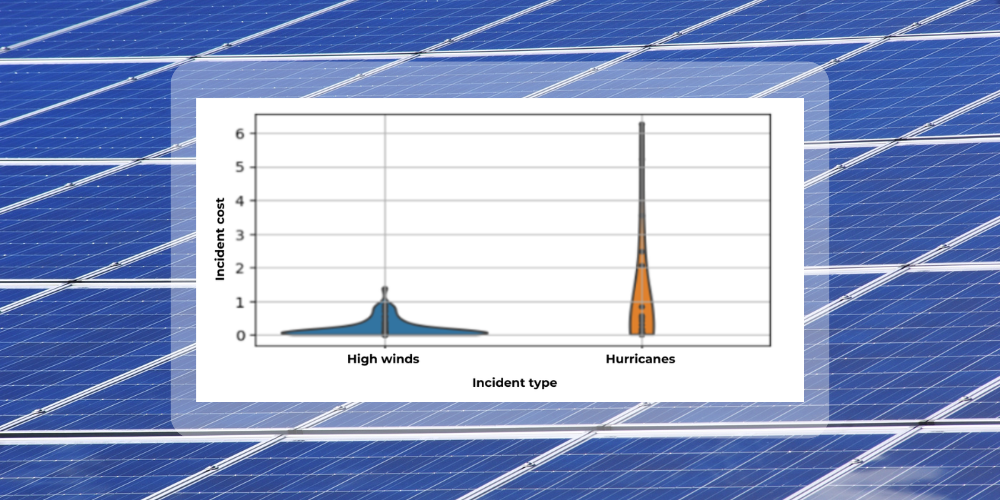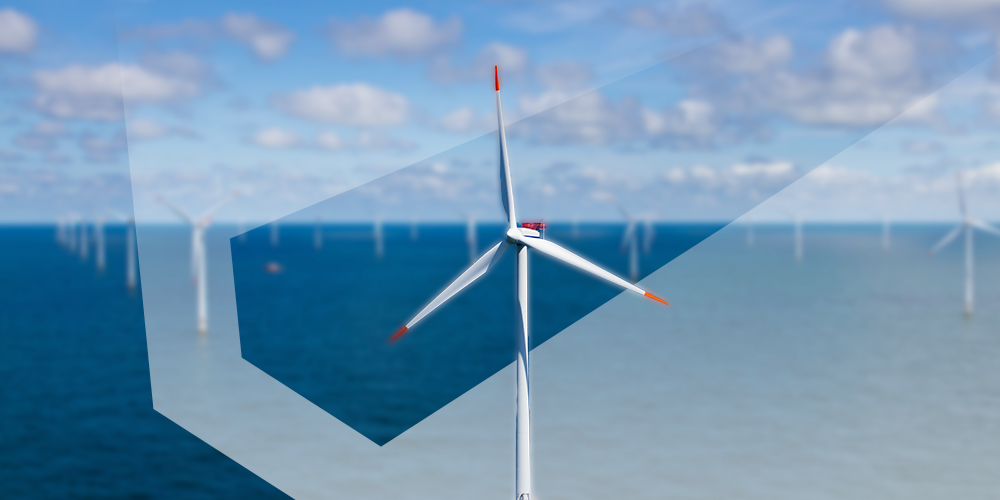When operational production varies from pre-construction energy yield forecasts, offshore wind farms typically underperform rather than overperform. What role is played by external wakes from far-field neighbouring wind farms 20km away or further? Could far-field external wind farm wakes drive the next adjustment in offshore yield assessment methodology? How far do wakes from offshore wind farms propagate?
These questions are more pertinent as offshore wind costs, subsidies and margins reduce. Energy yield forecasts are a key driver of revenue assumptions— and therefore project viability. The accuracy of the forecasts is of paramount concern.
In a pilot study, Clir detected and visualized the generation impact of wakes on an offshore wind farm from a far-field neighbouring wind farm. The findings show a clear and material difference in wind energy generation between (otherwise) free stream turbines as they yaw into and out of the far-field neighbour's wake. The distance between the wind farm being studied, and the obstructing neighbour, is more than 20km. The results add to the growing evidence-base that far-field wakes are impacting neighbouring wind farm production.
Clir's pilot study
The pilot study sought to identify the potential impact on turbine performance of external wakes over long distances. Wind wakes can result from nearby wind farms or landforms.
To do this, enriched data streams enabled peer-to-peer comparisons of operational turbine performance, as a function of wind direction.
Clir’s unique data model processes and enriches turbine SCADA time series and event data. The enriched data set categorizes individual turbine operating states, enabling filtering on concurrent full performance data, across selected groups of turbines. Machine learning-driven algorithms continuously identify and correct for changes in the nacelle north alignment on individual turbines. These functions of the enrichment process enable the visualization and empirical quantification of the impact of changes in wind direction on relative wind turbine performance.
Methodology
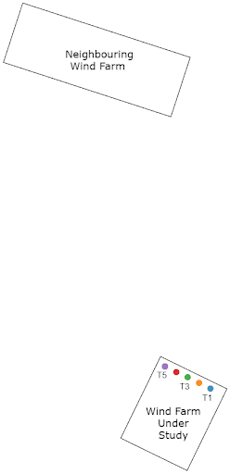 Figure 1 shows the arrangement of the turbines analyzed in this study — from the front row of a larger farm — in relation to a neighbouring wind farm to the north, whose wake flow potentially impacts the selected turbines.
Figure 1 shows the arrangement of the turbines analyzed in this study — from the front row of a larger farm — in relation to a neighbouring wind farm to the north, whose wake flow potentially impacts the selected turbines.
The analysis considered SCADA time-series measurements of the energy output of each turbine, across the row of free-stream turbines (T1 - T5). The analysis was limited to full 10-min periods of concurrent full performance operation, in wind directions where the wakes from the far-field neighbouring wind farm would be passing across the line of, supposedly, free-stream turbines.
The resulting data was presented on a polar plot to show the variation in concurrent generation between the free stream turbines, during normal operation, in each direction bin. For the analysis, two years of SCADA data was used to generate the results shown and the direction bins were computed from the average turbine wind direction value, in each 10-min interval. The accuracy and long-term consistency of the turbine SCADA direction signals is critical to the analysis.
The impact of far-field wakes
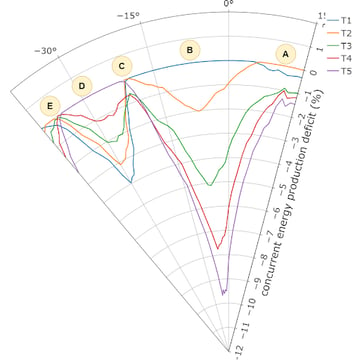 Figure 2 shows the apparent wake effect from the neighbouring wind farm on the relative performance of the selected turbines as they yaw into and out of the neighbour's wake. Specifically, the chart displays the concurrent energy production deficit of each turbine studied. This metric describes, in percentage terms, how much less energy each turbine produced, relative to the highest producer, in each direction bin. The highest producer is shown with an energy deficit value of 0.
Figure 2 shows the apparent wake effect from the neighbouring wind farm on the relative performance of the selected turbines as they yaw into and out of the neighbour's wake. Specifically, the chart displays the concurrent energy production deficit of each turbine studied. This metric describes, in percentage terms, how much less energy each turbine produced, relative to the highest producer, in each direction bin. The highest producer is shown with an energy deficit value of 0.
Following the directions indicated by labels A-E as they pass counter-clockwise through the potential wake flow from the neighbouring wind farm, the observed behaviour is as follows:
- T5 is the first turbine to enter the wind wake flow of the neighbouring wind farm. The total energy production of T5, relative to its peers, begins to decline.
- The relative performance differential across the selected turbines reaches its maximum, with T5 observed to generate almost 10 per cent less energy than T1. This corresponds to the wind direction whereby T1 is unwaked but about to enter the wake flow, while the remaining turbines are all impacted by the wake flow, with varying magnitude.
- All turbines are operating inside the wake effect from the neighbouring wind farm and a convergence in performance is observed, suggesting equivalent impacts of wake across all the turbines.
- T5 begins to exit the wake flow and becomes the most energetic turbine. The previous performance differential is seen to invert, with T1 now most impacted by the wake flow and exhibiting the largest performance deficit.
- All turbines have exited the wake flow from the neighbouring wind farm and their performance is seen to converge.
The impact on financing
The results of this study support the possibility that external wind wakes, capable of impacting the energy produced by offshore wind turbines, propagate much further than is currently being modelled in pre-construction energy yields. This fact may contribute to an overestimation of expected energy yield. Findings also suggest that current frameworks for wake effects compensation may not adequately reflect the impact from new far-field offshore wind developments on existing projects.
Further work is necessary and ongoing. Efforts include extrapolating the observed changes in relative turbine performance into annual energy production estimates. Additionally, further studies, with expanded suitable data sets are underway to empirically quantify the impact of wakes from far-field neighbours on wind resource. At a high level, it is intended that this work can inform and support the next generation of offshore pre-construction wake models.
This piece was written in collaboration with Dr. Shane Butler and Graham More, and was presented at WindEurope in 2022.

